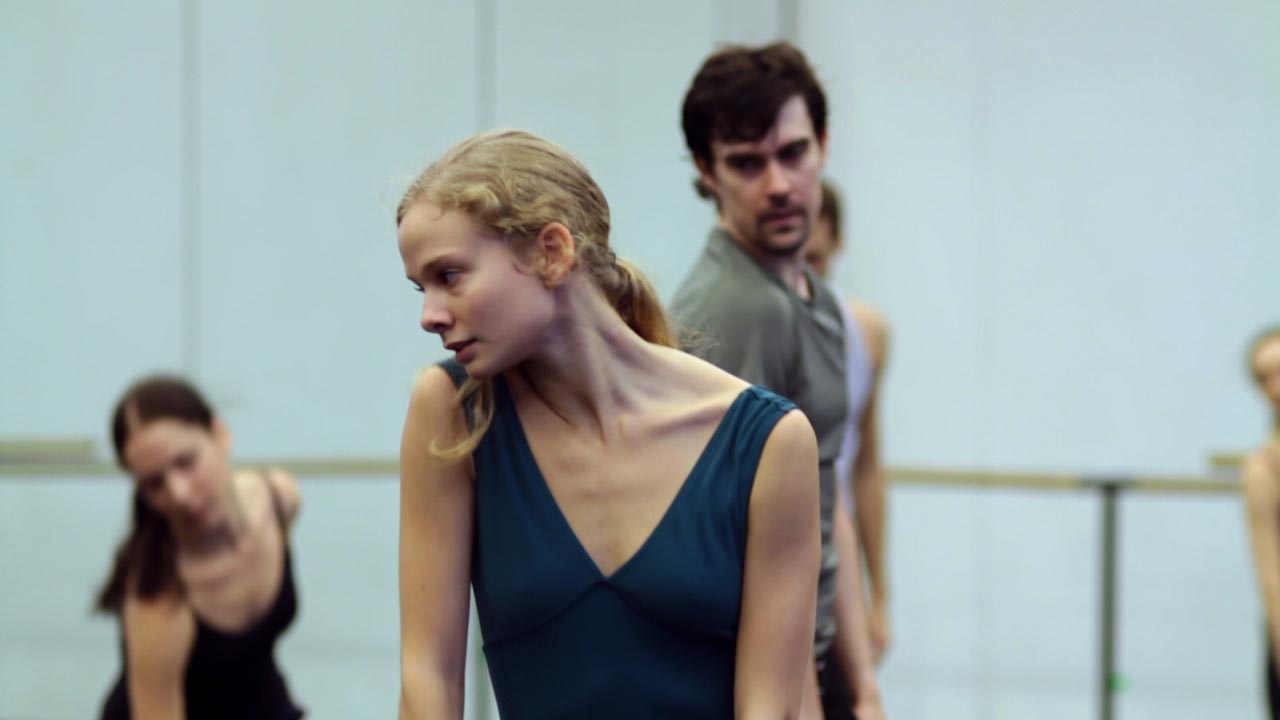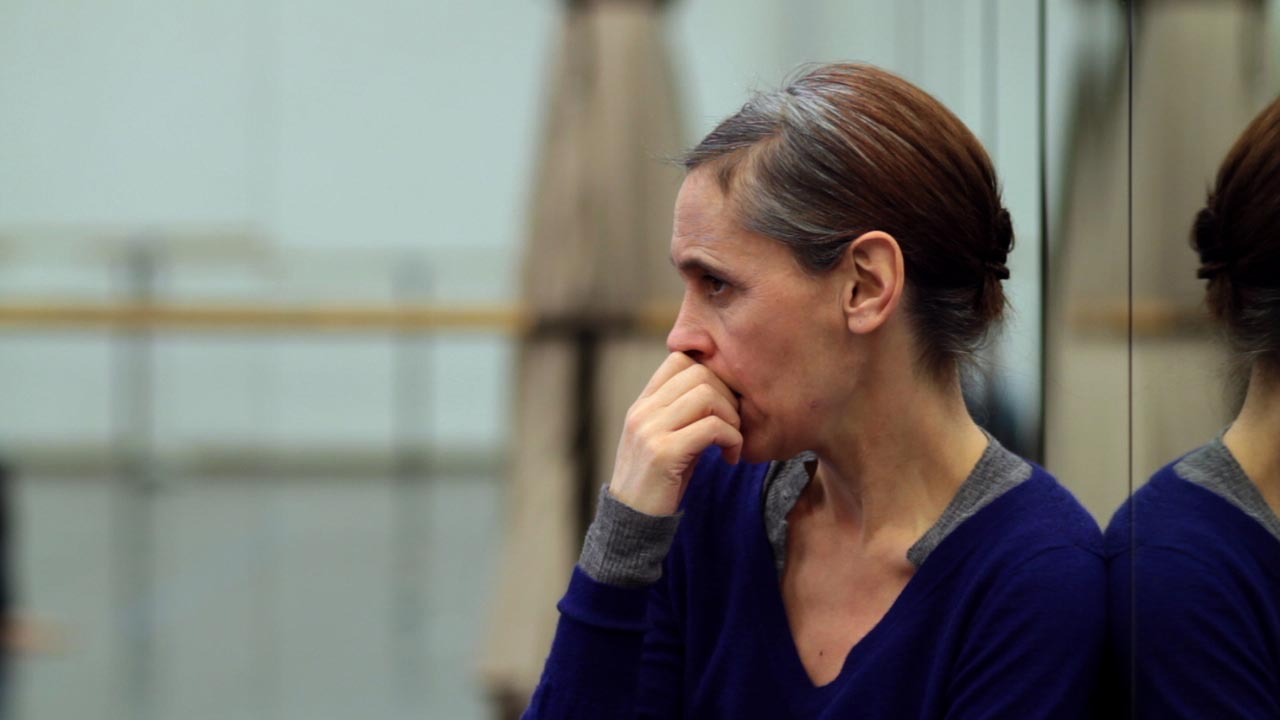2012
Rain
On 25th May 2011 the world-renowned Ballet de l’Opéra national de Paris presented Rain, its first ever performance of a choreography by Anne Teresa De Keersmaeker. The filmmakers Olivia Rochette and Gerard-Jan Claes followed the rehearsal process from the auditions to the opening performance. The documentary focuses on how De Keersmaeker and the Rosas dancers convey the dance idiom of the choreographer to the classically trained ballet dancers. The rigidity of ballet gives way to another kind of severity, namely the mathematical pattern of Rain, which, however, conceals a powerful emotional layering. A poetic documentary about searching, looking and hesitating within the walls of the opera, which at times can be claustrophobic.
Wir kennen den Kontur
des Fühlens nicht: nur, was ihn formt von aussen.
Wer sass nicht bang vor seines Herzens Vorhang?
Der schlug sich auf: die Szenerie war Abschied.
Leicht zu verstehen. Der bekannte Garten,
und schwaknte leise: dann erst kam der Tänzer.
— Rainer Maria Rilke, Duineser Elegien
Solicited by the Paris Opera, Anne Teresa De Keersmaeker agrees to put on a new production of Rain (2001) involving contemporary dance movements that at first seem alien to the illustrious French ballet company. The filmmakers were already familiar with the work of this choreographer, who had previously commissioned recordings from them, and they share her sense of rigour and sensuality. In this case, a mix of documentary sobriety and brief incursions into the realm of fiction, as when the camera lingers on the graceful beauty of one of the ballerinas, in defiance of the narrative thread and the Opera company’s rules (filming is all right, but not just one person). The editing thus switches between different types of images: the video of the first production of Rain that the troupe sometimes consults, shots from the Opera’s surveillance cameras, telephone conversations with the choreographer… The film acts as a curtain, like the minimal and undulating fringe of Rain’s Paris stage set. Through the things that are hidden from view, this fragmentary form suggests that beyond the technical learning process there is a more mysterious appropriation. A transmission only visible perhaps in the living present of the performance. (Charlotte Garson)
Watch Rain on Avila.








